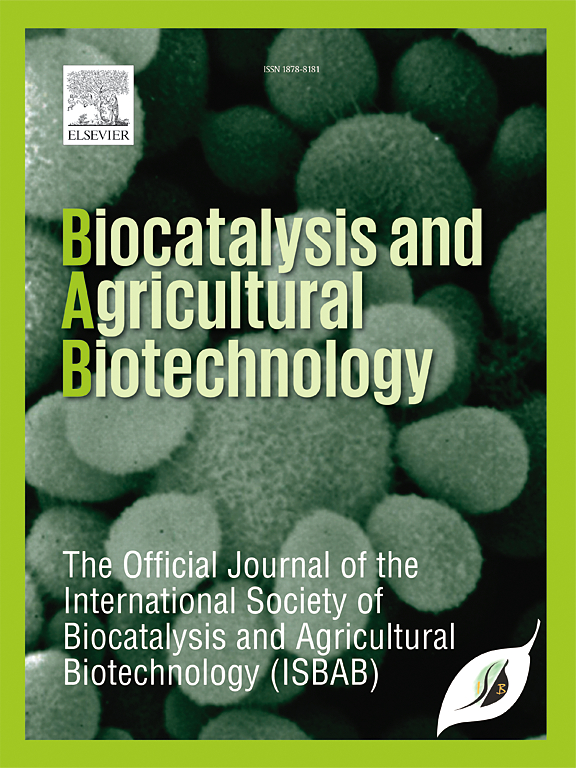Phytohormone delivered through GRAS nano-platform promoting plant root growth: A promising strategy towards sustainable agricultural practices
IF 3.4
Q2 BIOTECHNOLOGY & APPLIED MICROBIOLOGY
引用次数: 0
Abstract
Global food security will impose a major challenge in the years to come. The use of nanoscale delivery platforms in the agricultural sector holds the promise to provide a more sustainable alternative compared to conventional delivery of agrochemicals. Therefore, there is an imperative need to develop robust and cost-effective nanoscale delivery platforms. This work reports a nanodelivery system using tannic acid and polyvinylpyrrolidone (TA-PVP), GRAS ingredients, as a crop management tool to deliver plant growth regulators (PGR) for sustainable agriculture. Particularly, indole-3-acetic acid (IAA), a member of the auxin class of phytohormone due to the high hydrophobicity and degradability that limited its commercialization. The IAA nanoparticles (IAA NP) showed enhanced chemical stability in solution and sustained release, described by the Ritger and Korsmeyer–Peppas models. The non-phytotoxicity properties were studied with tomato seedlings up to 2500 ppm of IAA and the in vitro non-cytotoxicity was demonstrated with macrophages (J774A.1) and dermal fibroblasts (HDF) at the concentration below 39 ppm of IAA. Root growth and plant health assessments indicated enhanced root length and no detrimental impact on photosynthesis at 1 ppm IAA. Furthermore, the phosphomonoesterase activity was enhanced boosting the phosphorus metabolism. This study supports nano-enabled PGR delivery for sustainable agriculture.

求助全文
约1分钟内获得全文
求助全文
来源期刊

Biocatalysis and agricultural biotechnology
Agricultural and Biological Sciences-Agronomy and Crop Science
CiteScore
7.70
自引率
2.50%
发文量
308
审稿时长
48 days
期刊介绍:
Biocatalysis and Agricultural Biotechnology is the official journal of the International Society of Biocatalysis and Agricultural Biotechnology (ISBAB). The journal publishes high quality articles especially in the science and technology of biocatalysis, bioprocesses, agricultural biotechnology, biomedical biotechnology, and, if appropriate, from other related areas of biotechnology. The journal will publish peer-reviewed basic and applied research papers, authoritative reviews, and feature articles. The scope of the journal encompasses the research, industrial, and commercial aspects of biotechnology, including the areas of: biocatalysis; bioprocesses; food and agriculture; genetic engineering; molecular biology; healthcare and pharmaceuticals; biofuels; genomics; nanotechnology; environment and biodiversity; and bioremediation.
 求助内容:
求助内容: 应助结果提醒方式:
应助结果提醒方式:


